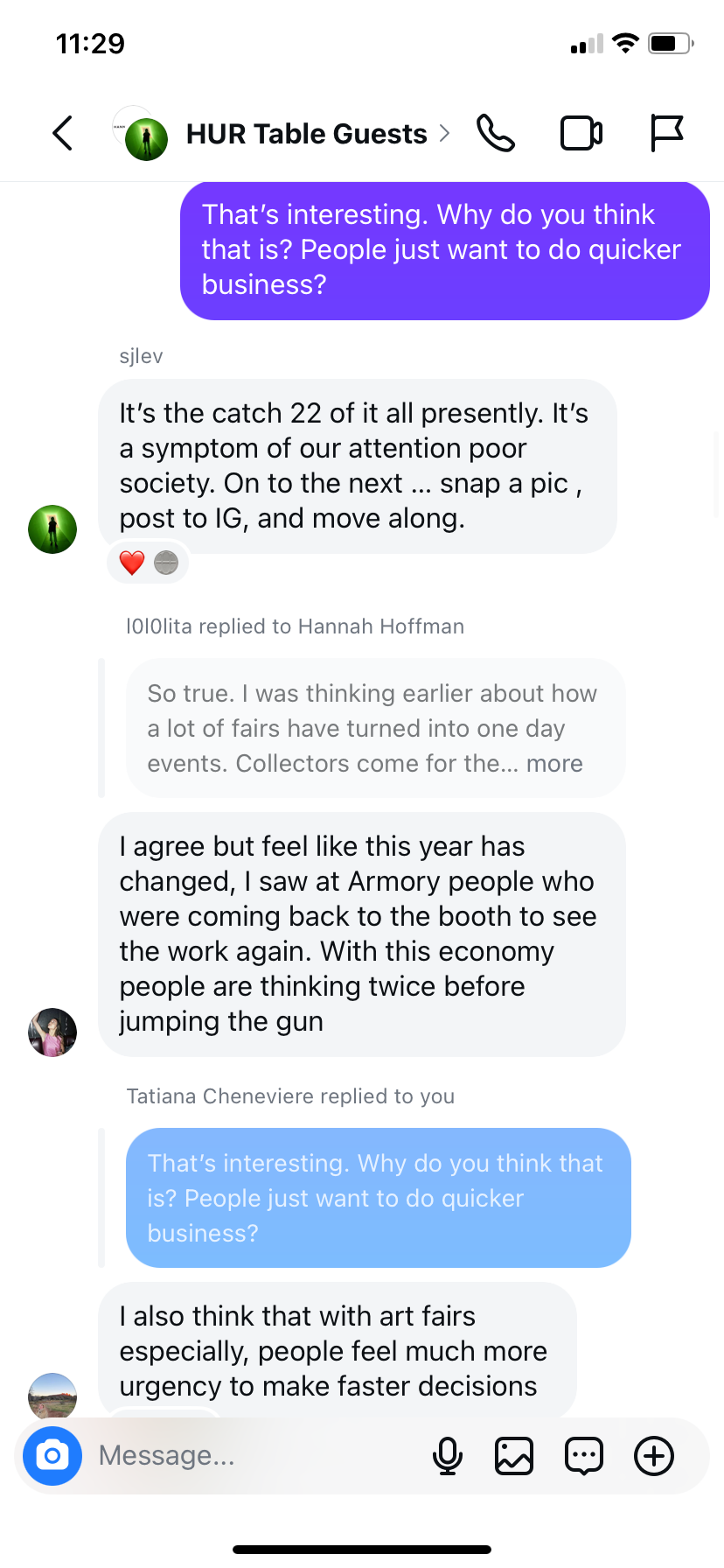Art Fairs Are Everywhere—But Who Are They For?
Courtesy of Tefaf.
Art Fairs Are Everywhere—But Who Are They For?
with Hannah Hoffman, Lolita Cros, Sarah Levine and Tatiana Cheneviere
By HURS Team
Art fairs once offered an accessible window into the art world, providing a glimpse of the latest in contemporary culture without the barriers of museum walls or curatorial narratives. For outsiders, these fairs felt like a rare chance to immerse themselves in a world typically obscured by insider dealings. But for those who are an integral part of the art world, know better. The politics, financial investments and social networks that these fairs are built on, have become an ecosystem in itself. As the global art calendar grows more cluttered—with fairs multiplying and running simultaneously across continents—the question is: What purpose do art fairs truly serve today? Have they outlived their relevance, or do they still hold an irreplaceable role in the art ecosystem?
Post-pandemic, many thought the endless cycle of fairs and events would slow down. Shipping art and flying collectors around the world felt like an outdated luxury—unsustainable for the environment and, let’s face it, exhausting for those who attend them all. Yet predictions of a change of pace remained just that; a hope for less but better has actually led to more. Afraid of missing out, many galleries continue to feel pressured to attend. And thus, the business behind these fairs continues, driven by a need for galleries to gain exposure and make vital sales—even as the costs to participate skyrocket. To ensure a return on investment, galleries tend to focus on works on the upper end of the market with many works pre-selling before the booths even open. It makes these fairs less and less appealing to emerging collectors, as it's impossible to acquire anything.
Despite the drawbacks, art fairs still serve as seasonal markers for the art world. Like fashion weeks, they offer a snapshot of trends and shifts in taste and offer a place for industry insiders to connect. But with the dominance of corporate franchises like Art Basel and Frieze, and the overwhelming number of fairs, is the art fair becoming less about fostering creativity and more about marketing to a wealthy, insider audience?
We asked four industry insiders for their take.

























